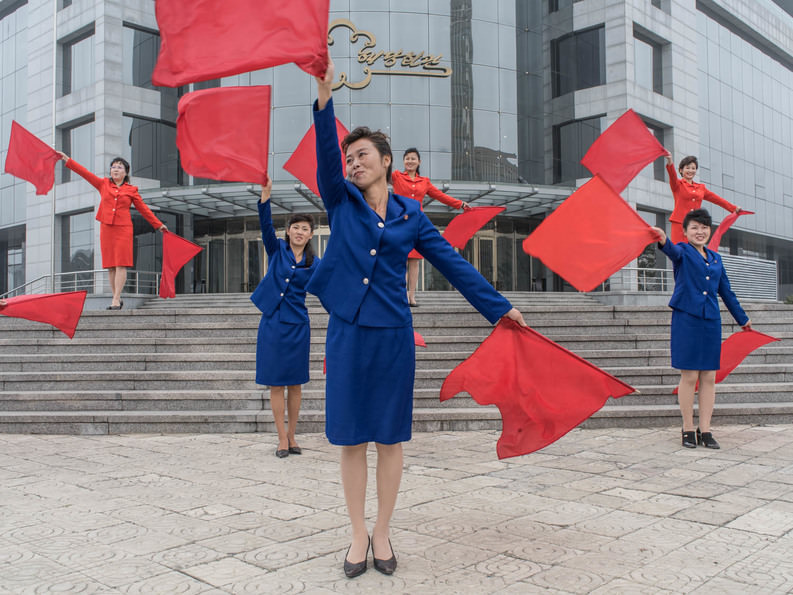The story behind North Korea

History
Here at Koryo Tours we arrange regular group tours to North Korea throughout the year. Our group tours are designed to give an introduction to North Korea's society, politics, and culture. We can also arrange private independent tours to North Korea with tailored itineraries based on your interest or requests.
Have a question about travel to North Korea? Feel free to contact us at your convenience.
Interested in learning more about North Korea? Check out the Koryo Tours Blog for regular posts on North Korean culture, society, and travel.
Please see below for a historic overview of this fascinating place.
For Korea, the end of World War II brought liberation from decades of Japanese colonial rule and division across the 38th parallel between north and south. Rival states soon formed around the support of Soviet Union in the north and United States in the south. The Democratic People's Republic of Korea ('DPRK' or 'North Korea') was formally established on September 9th 1948.
The breakout of the Korean War on June 25th 1950 saw north and south together with their respective allies pitted in a bloody three-year conflict that devastated the peninsula. An armistice agreement signed in July 1953 established the Korean Demilitarised Zone, which remains in place to this day.
In the decades following the Korean War, the DPRK worked to rebuild the country and consolidate its position in East Asia and the world. The collapse of the Soviet Union in the early 1990s and natural disaster led to both food shortages and economic hardship, a period known as the 'Arduous March' in Korea. Since this time relations with several nations have been strained as the DPRK has developed nuclear technologies.
Today the country remains on its own political course, pursuing a twin policy of self-reliant economic development and self-defence. Society increased access to services and goods (both foreign and domestic), changing the way people go about their lives in North Korea. Following an up-and-down year of diplomacy in 2018, there is real potential for improved relations with North Korea's long-time adversaries - the United States and South Korea. Of our past 25 years working in North Korea, this is certainly one of the most interesting times to get to know this complex and relatively unknown country.
What better way than to see it for yourself?
- Official Title
- Democratic People’s Republic of Korea
- Flag
- HEAD OF STATE
- Kim Jong Un — Supreme Commander of the KPA, Chairman of the National Defense Commission, General Secretary of the Korean Workers’ Party
- RULING PARTY
- Workers’ Party of Korea
- CURRENCY
- Won = 100 chon (approx 100 Won = US $1)
- AREA
- 120,540 sq km (80% mountainous)
- POPULATION
- 24 million (2008 census)
Korea’s history spans over 5000 years. Due to its strategic geographical location, neighbouring China, Japan and Russia, the peninsula has often been the field of battle of foreign powers and as now inextricably enmeshed in the global political climate.